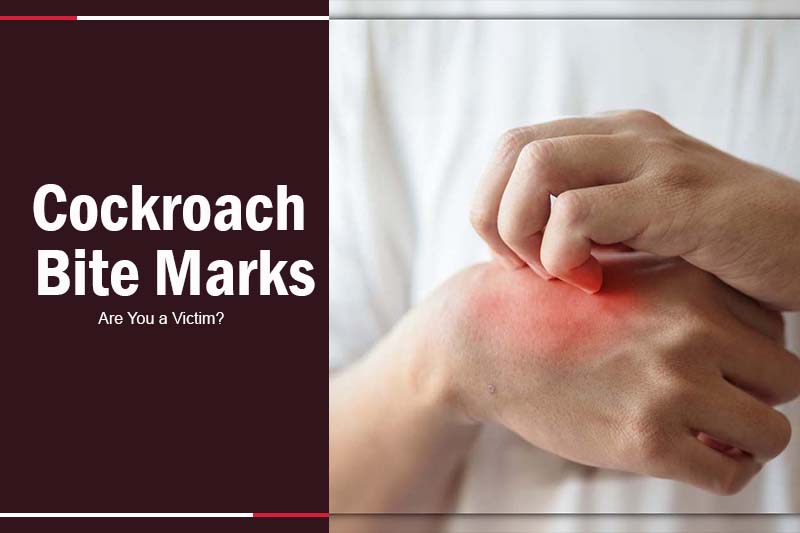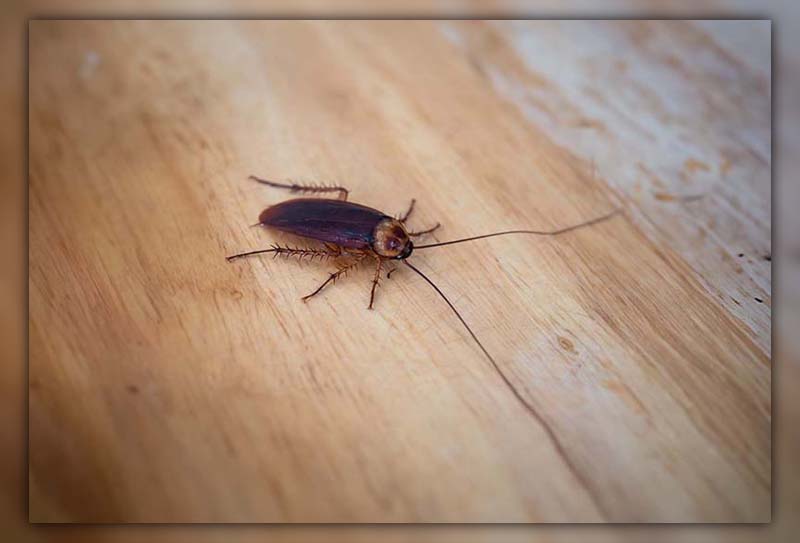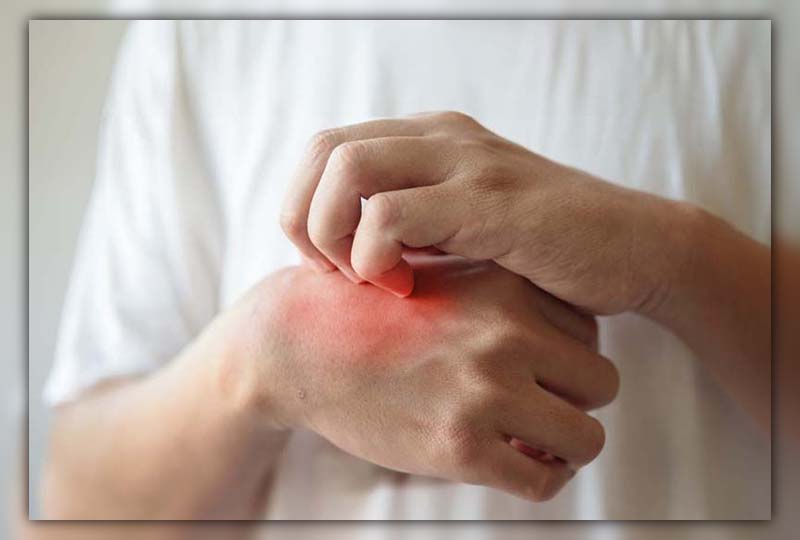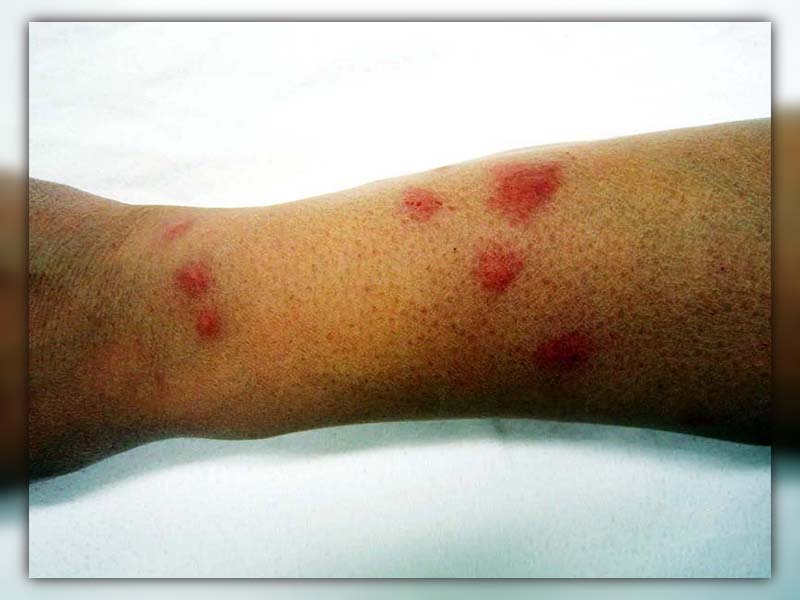Do Roaches Lay Eggs in Mattresses? How to Simple eliminateIf you’ve been dealing with the aftermath of what seems to be cockroach bite marks, worry not!
In this blog, we unravel the mysteries behind these bites.

Do Cockroaches Bite?
Cockroaches seldom bite humans, typically occurring only in rare, extreme circumstances.
Their natural inclination is to avoid human contact whenever possible, and they usually only interact when no other options are available.
Sometimes, it might appear as if cockroaches are biting, but they’re often foraging for food remnants or dead skin.
Biting is not a common defense mechanism for cockroaches, unlike other insects, given their mouthparts are generally insufficient to penetrate human skin.
In cases of insect bites on human skin, it’s highly unlikely they originated from cockroaches.
>> Read more: Do Cockroaches eat indoor plants?
What Does a Roach Bite Look Like?
Cockroach bites typically manifest as raised, red bumps on the skin, slightly larger than those from bed bugs or mosquitoes, measuring around 1/8 inch in size.
These bites are infrequent due to the nature of cockroach mouthparts and their tendency to avoid biting humans.
In some cases, a cockroach bite may form a scab as it heals.
Is A Cockroach Bite Painful?
The perception of pain from a cockroach bite varies from person to person and depends on individual sensitivity and circumstances.
Pain experienced can range from a pinching sensation to a sharp pain.
Initially, the discomfort typically lasts for a few seconds, and some individuals may not even be aware of the bite.
However, if a cockroach bite leads to an infection, it can cause significant pain.
It’s important to note that the pain in this case stems from the resulting infection, not the bite itself.
Source: Fresh Home 24
What Causes Cockroaches To Bite Humans?
Cockroaches might bite humans for two primary reasons, both of which do not involve an intent to cause harm.
Firstly, cockroaches may bite if they detect food scents on the skin.
Food residues on the skin can attract cockroaches, making a bite more likely when they come into contact with a person.
The second reason for cockroach bites relates to an infestation that has depleted other food sources within or near a household.
When faced with a lack of alternative food sources such as garbage, spilled food, crumbs, or leftovers, cockroaches may resort to biting humans. This situation typically occurs in severe infestations.
The risk of being bitten by a cockroach is highest during the night, their most active period. Cockroach bites commonly occur on areas like the hands, feet, eyelashes, and fingernails.
Do Cockroach Bites Transmit Diseases?
Fortunately, cockroach bites do not directly transmit diseases and are non-venomous.
However, it’s important to note that cockroaches, being unclean insects, can serve as carriers of various infections.
Disease-causing bacteria, viruses, and allergens can be transmitted through cockroach bite wounds, primarily via their feces, saliva, and vomit.
Cockroaches have been associated with the following infections and diseases:
- Salmonella
- Dysentery
- Gastroenteritis
- Cholera
- Giardia
- Staphylococcus
- Streptococcus
Given these health concerns, we will provide guidance on promptly and effectively addressing a cockroach bite.
>> Read more: Roaches carry disease: Home Hazards Unveiled
How do you treat a cockroach bite?
Cockroach bites are relatively uncommon, but if you do get bitten, it’s important to treat the bite properly to reduce the risk of infection and manage any discomfort.
Here are steps you can take to treat a cockroach bite and signs of being bitten, as well as home remedies and how to treat an infected bite:
Signs of being bitten by a cockroach
- Short, sharp pain.
- Irritation.
- Itching.
- Swelling.
- Red bumps.
- Skin rash.
Home remedies for cockroach bites
- Lemon Juice: Apply freshly squeezed lemon juice to the bite area. Lemon juice can have a soothing and anti-inflammatory effect.
- Aloe Vera Gel: Apply aloe vera gel to the bite. Aloe vera has soothing properties and can help reduce itching and irritation.
- Bicarbonate of Soda and Water Paste: Mix bicarbonate of soda with a little water to create a paste, then apply this paste to the bite area. Bicarbonate of soda can help reduce itching.
How to treat an infected cockroach bite
If you suspect the bite is infected (signs may include increased swelling, pain, redness, or discharge), it’s important to consult a healthcare professional for appropriate medical treatment.
You may need antibiotics or other medications to address the infection.
Remember, if you experience severe symptoms or signs of a severe allergic reaction such as difficulty breathing or severe swelling, seek immediate medical attention.
>> Read more: Can roaches live in mattresses? How to Simple eliminate
Conclusion
From understanding the signs of cockroach bites to implementing soothing remedies, we’ve navigated the realm of cockroach bite marks together.
If you’re hungry for more insights on dealing with pests and ensuring a bug-free haven, check out our other informative blogs at Pestweek.

Calina Mabel has over 15 years of experience in the field of journalism and communications. Currently, Calina Mabel is the Content Writer for categories such as Cockroach, Ants, Bed Bugs, Mosquito, Rodent, Termite, and Flies on Pestweek.com. She aims to build content for these categories with a focus on providing valuable and accessible information to readers, in order to create the world’s largest knowledge community about Pests.
All content written by Calina Mabel has been reviewed by Emily Carter.




